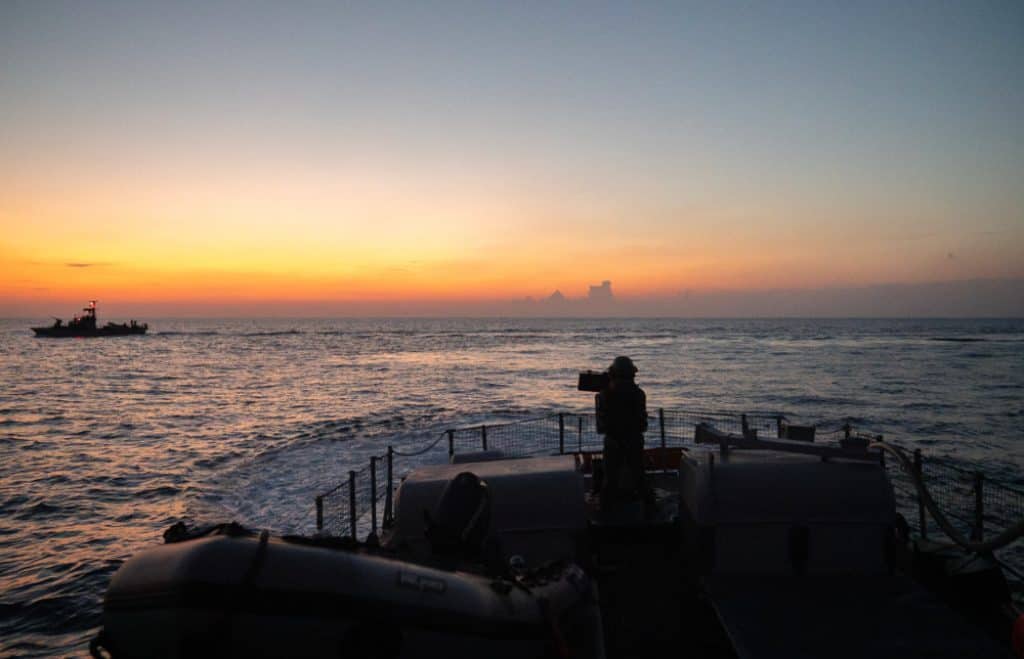
On November 13, the Israel Defense Forces (IDF) released the names of six soldiers killed in southern Lebanon. All of them were from the 51st Battalion of the Golani Brigade. The battalion has seen significant action since October 7, 2023, and has fought in many key battles. The losses are one of the worst casualty totals in a day since the IDF’s ground operation in Lebanon began on October 1.
These six fatalities bring the total number of troops killed in Lebanon since Operation Northern Arrows began to 40 soldiers, according to a list updated daily by Israel’s Ministry of Foreign Affairs. Ten IDF soldiers have also been killed in northern Israel during the last month and a half. In addition, Israeli civilians have been killed and wounded by recent Hezbollah rocket and drone attacks.
The losses to the Golani Brigade’s 51st Battalion impact a unit that suffered heavily during Hamas’s attack on October 7, 2023, when the battalion defended a sector of the southern Gaza border. The 51st Battalion experienced significant losses that day, including almost 30 men killed.
On November 13, Hezbollah conducted attacks across Israel using missiles and drones, and Iranian-backed groups in Yemen and Iraq continued threatening Israel and the wider region. For instance, the Houthis in Yemen claimed on November 12 that they targeted the US aircraft carrier USS Abraham Lincoln. Instead, it appears they targeted two US destroyers with drones and missiles, USS Stockdale and USS Spruance.
On the evening of November 13, Iranian-backed militias in Iraq targeted the southern Israeli port city of Eilat with a drone. Footage posted online shows the drone being intercepted by an Israeli missile. The IDF said that sirens sounded in the city, and the unmanned aerial vehicle (UAV) “that was launched from the east was intercepted by an Israeli Navy missile boat.” The IDF usually terms drones flown from Iraq as being “launched from the east” without confirming they came from Iraq. The attack occurred a day after a UAV that was also likely launched from Iraq flew near the southern Israeli desert town of MItzpe Ramon.
In northern Israel, the IDF said that 55 projectiles, mostly rockets, had been fired by Hezbollah on November 12. On the morning of November 13, the IDF intercepted drone attacks at 5:14 am and 7:01 am. More UAV attacks followed in the afternoon, one of which was intercepted before it crossed into Israel. In another incident in the afternoon, two drones were detected crossing into northern Israel. The IDF stated that a total of around 40 rockets and drones were fired at Israel that afternoon.
On November 13, Hezbollah claimed that it targeted Israel’s Kirya military base in Tel Aviv for the first time. The Iranian-backed group claimed it used drones in the attack; however, no sirens sounded in Tel Aviv, and the IDF did not release a statement about the alleged incident. Instead, the IDF said that five long-range “projectiles were identified crossing from Lebanon into Israeli territory” at 5:58 pm, adding, “Some of the projectiles were intercepted by the IAF, fallen projectiles were identified.” Sirens had sounded across central and northern Israel during this period. It was unclear if the incidents were linked, and the path of the sirens appeared to indicate a missile threat rather than drones.
In Lebanon, the IDF carried out an airstrike on “dozens of launchers” used to target central and northern Israel, the Israeli military said. In another airstrike, the Israeli Air Force hit smuggling routes between Syria and Lebanon. “With the support of the Syrian regime, the Hezbollah terrorist organization continues to systematically abuse civilian infrastructure for its terrorist activities,” the IDF said.
In Beirut, the IDF continued attacks on Hezbollah sites used to store weapons, destroying nine new locations. These strikes come a day after the IDF said that a majority of these types of Hezbollah sites in Beirut had been hit over the last month and a half.
On the Lebanese coast, the Israeli Navy also conducted a strike on what the Israeli military characterized as “Hezbollah’s naval unit in Beirut.” Footage released by the IDF showed a dozen boats, each around 40 feet long, and several storage sites along the Lebanese coast. “The base was used as a central operations hub in which dozens of the unit’s vessels were stored and training was carried out, with the goal of damaging naval and strategic assets in Israel’s maritime space,” the Israeli military said.
In southern Lebanon, several Hezbollah commanders were also eliminated. One was the newly appointed commander of a Hezbollah anti-tank unit in southeastern Lebanon. Another Hezbollah commander responsible for the area near Ghajar was also killed. Ghajar is a village on the border that Hezbollah claims is part of Lebanon. Over the years, the village, inhabited by members of the Alawite religious minority, was closed to most Israelis due to its sensitive location. Ghajar was part of Syria before 1967.







